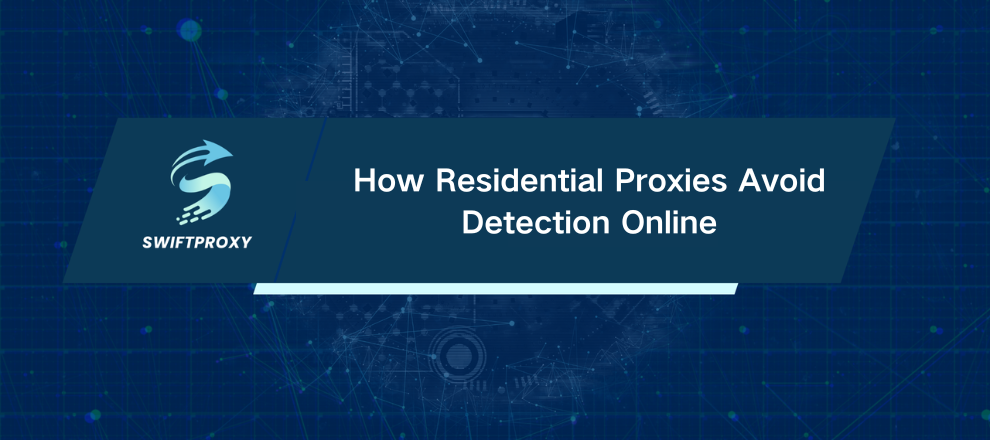How Residential Proxies Avoid Detection Online

When it comes to staying anonymous online or accessing geo-restricted content many professionals choose residential proxies. They work by routing your traffic through real ISP-assigned home IP addresses which makes you appear as an ordinary internet user rather than a bot or server farm. But can websites still detect these proxies The short answer is yes although it's not straightforward.
Residential proxies are not completely invisible but they are much harder to detect compared to datacenter proxies. In this article we will explain how detection works and share strategies to help you stay under the radar especially if you want your proxy setup to be rock solid.
Understanding Residential Proxies
Imagine your internet requests traveling through someone's home Wi-Fi instead of a data center. That's residential proxies for you. These IPs come straight from ISPs and are assigned to real devices in real locations. Unlike datacenter proxies—think server rooms and clusters—residential IPs are tied to genuine users. That connection adds authenticity and trust, making it tougher for websites to flag them.
Because they mimic typical user behavior, residential proxies excel at:
Web scraping without raising alarms
Verifying ads across regions
Managing multiple social media accounts
Bypassing strict geo-blocks
If stealth is your priority, residential proxies are your best bet.
How Swiftproxy Elevates Residential Proxies
Swiftproxy's network boasts over 70 million residential IPs, all sourced directly from legit ISPs. This isn't recycled or rented IPs from shady sources—these are authentic, reliable addresses. Plus, with features like geo-targeting and unlimited simultaneous sessions, Swiftproxy helps you blend into the local traffic landscape effortlessly.
Why Are Residential Proxies Harder to Detect
Detection isn't black and white. Websites deploy sophisticated tools to sniff out proxies, but residential IPs come from genuine devices connected through ISPs, giving them a real-user fingerprint. Datacenter proxies, in contrast, tend to cluster suspiciously, making them easy targets.
Still, detection hinges on factors like:
Proxy quality
User behavior
Detection tech sophistication
The better your proxy provider and your approach, the slimmer the chances you’ll be caught.
How Websites Sniff Out Proxies
Websites play detective using several techniques:
IP Reputation Checks
They consult databases flagging suspicious IPs. Overused or “tainted” IPs get blacklisted, raising suspicion.
Traffic Pattern Analysis
Robotic behavior—blazing fast clicks, repetitive page requests—raises red flags. Real users don't behave like machines.
DNS and WebRTC Leaks
Mismatch between your IP and DNS or leaks from WebRTC can betray your true location.
CAPTCHAs and Bot Challenges
When sites suspect automation, they hit you with CAPTCHAs or anti-bot tests. Failure here means you're exposed.
How to Stay Under the Radar with Residential Proxies
If you want to keep your proxy use smooth and undetectable, here's your playbook:
Choose a Reputable Provider
Quality matters. Providers like Swiftproxy offer authentic IPs with top-notch reputation monitoring. Avoid sketchy services recycling IPs.
Rotate IPs Frequently
Don't stick to one IP for too long. Rotate with every session or request to mimic natural browsing behavior.
Simulate Human Interaction
Add random delays, varied clicks, and scrolling patterns. Mechanical, robotic actions scream “bot.”
Spread Out Your Requests
Avoid overwhelming one IP with too many requests. Use a broad IP pool to distribute traffic evenly.
Configure Proxies Correctly
Check DNS alignment and block WebRTC leaks. One slip-up here can blow your cover.
What Makes Swiftproxy Stand Out
One-Hop Routing: Direct connections cut latency and reduce odd routing patterns that trigger detection.
Massive IP Pool: Over 70 million IPs keep your traffic fresh and unpredictable.
Custom Rotation: Switch IPs on your schedule—per request, session, or as needed.
Protocol Support: HTTP, HTTPS, SOCKS5 compatibility keeps things flexible and secure.
Ethical Sourcing: Only IPs from verified ISPs, ensuring compliance and trustworthiness.
When Residential Proxies Might Still Get Flagged
Even the best proxies aren't foolproof. Watch out for:
High-volume scraping without IP rotation
Using low-quality or recycled IPs
IPs with a bad reputation history
Poor proxy configuration causing leaks
Avoid these traps and you're golden.
The Bottom Line
Residential proxies aren't invisible—but they are the stealthiest game in town. When paired with best practices, they drastically reduce detection risk. The right provider, proper configuration, and thoughtful usage are your keys to success.

















































